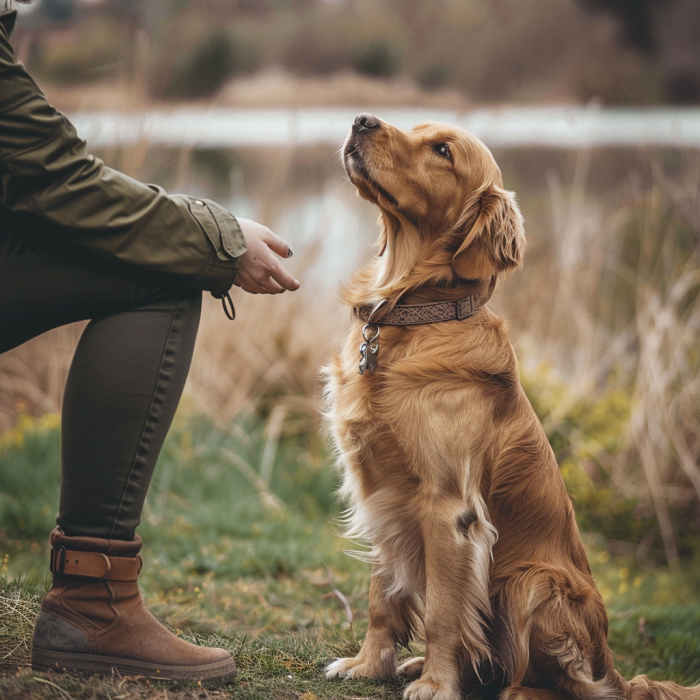How to Prevent Dog Bites: 7 Proven Strategies for Owners
Dog bites are a significant concern for both dog owners and society at large. In states like California, where dog ownership is popular and public spaces are shared with pets, the responsibility to prevent dog bites is crucial. Understanding and implementing strategies to mitigate this risk can save you from potential legal troubles and ensure the safety of others.
In this article, we will explore seven proven strategies to prevent dog bites, focusing primarily on the Southern California region. By the end, you will have actionable insights to help you manage your dog's behavior and protect your community.
1. Understand Your Dog’s Behavior
Dogs communicate through their behavior, and understanding these signals is the cornerstone of preventing dog bites. Just like humans, dogs have different temperaments that influence how they react to various stimuli. Some common signs to be aware of include:
- Body Language: Tail wagging doesn't always mean a dog is happy. Pay attention to the stiffness of the body, raised hackles, or a curled lip.
- Vocalizations: Growling, barking, or whining can indicate discomfort or agitation.
- Eye Contact: Direct eye contact can be perceived as a threat by some dogs.
For those residing in busy urban areas like San Diego, where there are numerous interactions between dogs and humans, being adept at reading these signs can prevent many unwanted incidents.
2. Proper Training and Socialization
Training is not just about teaching your dog commands. It’s about instilling a sense of discipline and understanding of acceptable behavior. Early socialization plays a vital role in this process. Here are some key points:
- Basic Commands: Training your dog to follow basic commands like "sit," "stay," and "leave it" can significantly reduce the risk of aggressive responses.
- Socializing with Humans and Other Dogs: Introduce your dog to different environments, people, and other animals gradually. This exposure helps your dog learn how to behave appropriately in various situations.
For additional tips on handling aggressive behaviors in dogs, you might find useful information from our dedicated Dog Bite resource page.
3. Regular Exercise and Mental Stimulation
A well-exercised dog is typically a well-behaved dog. Dogs have high energy levels that need to be expended through physical activities and mental challenges. Regular walks, playtime, and interactive toys can keep your dog happy and less prone to frustration-induced aggression.
In regions like Southern California, where the weather is generally conducive to outdoor activities year-round, take advantage of parks and trails to give your dog the exercise they need.
4. Avoid Risky Situations
As a responsible dog owner, you should be aware of certain conditions that can increase the likelihood of a dog bite and avoid them. Some scenarios to steer clear of include:
- Crowded Places: If your dog gets anxious around large groups, avoid busy streets or events.
- Unfamiliar Environments: Sudden changes in environment can stress dogs out, leading to unpredictable behavior.
- Provocative Behaviors: Teach children and others how to approach and interact with dogs respectfully. Rough play or sudden, loud noises can trigger a defensive reaction.
5. Use Proper Restraints and Safety Measures
Keeping your dog on a leash in public spaces is not only a legal requirement in many areas, including California, but it also provides you with control over your dog’s actions. Here are additional steps:
- Fenced Yards: Ensure your backyard is securely fenced to prevent your dog from escaping.
- Leash Training: Use a sturdy leash and collar, or a harness, especially if your dog has a tendency to pull or lunge.
- Muzzle Training: In certain cases, using a muzzle might be necessary to prevent biting. Train your dog to wear a muzzle comfortably if you anticipate situations where it might be required.
6. Regular Health Check-Ups
Health issues can often lead to behavioral problems in dogs. Regular veterinary check-ups can help identify and treat underlying conditions that might contribute to aggressive behavior. Pain, infections, or neurological issues can make even the gentlest dogs react defensively.
7. Consult Professionals When Needed
If your dog displays consistent signs of aggression, it’s crucial to consult professionals. Animal behaviorists and trainers specialize in dealing with problem behaviors and can provide you with strategies tailored to your dog’s needs.
Contact Us for Legal Advice
In case of a dog bite incident, whether you are the owner or the victim, understanding your legal rights is vital. At Goldfaden Law, we specialize in handling such cases and can offer you comprehensive legal advice and representation. For more information, visit our Dog Bite page or Contact Us to discuss your situation with our experienced attorneys.
Conclusion
Preventing dog bites is a shared responsibility that requires diligence, understanding, and proactive measures. By following these seven strategies, you can significantly reduce the risk of bites and contribute to a safer community. Remember, your commitment to training, socialization, and awareness can make all the difference.
FAQs
1. What should I do immediately after a dog bite incident?
Seek medical attention right away, even if the bite seems minor. Reporting the incident to local authorities and consulting a lawyer can be crucial steps in protecting your rights.
2. Is California a strict liability state for dog bites?
Yes, California is a strict liability state, meaning dog owners can be held liable for bites regardless of the dog's history or the owner's knowledge of aggressive behavior.
3. Can I be sued if my dog bites someone on my property?
Yes, you can be sued if your dog bites someone, even on your own property. Ensuring proper confinement and warning signs can help mitigate this risk.
4. How can I prove my dog was provoked in a bite incident?
Gathering evidence such as witness statements, video footage, or expert testimony can help demonstrate that your dog was provoked.
5. Are there specific breeds more prone to biting?
While some breeds may have a reputation for aggression, it’s essential to remember that any dog can bite. Training, socialization, and proper care are critical factors in preventing bites.
For more legal insights and assistance with other personal injury matters, feel free to explore our Personal Injury page.
Taking proactive steps to manage your dog's behavior can make all the difference in preventing dog bites. If you need legal advice, don’t hesitate to Contact Us for a consultation. We’re here to help you navigate the complexities of dog bite incidents and other personal injury cases.








